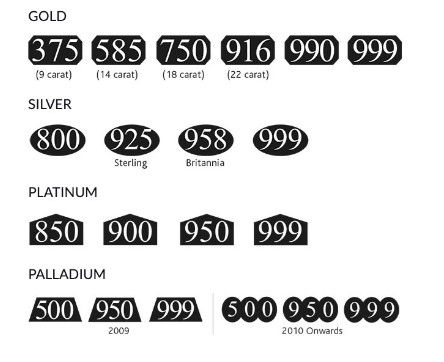A guide to hallmarking
At Six Carats we know that when it comes to buying jewellery you want to be confident in what you and buying and that is why we have created this guide to understand the British Hallmarking system.
What is a hallmark?
Gold, silver, platinum, and palladium are seldom employed in their purest state for jewellery owing to their inherent softness. Instead, they are alloyed (mixed) with other metals to attain the desired strength, durability, and colour. The identification of the purity of these precious metals is facilitated through the use of a hallmark.
With a history spanning centuries, hallmarks serve as a guarantee of the quality and purity of precious metals, instilling confidence in your purchase. In the UK, they are a mandatory requirement, ensuring their presence at the point of sale, with weight exemptions applicable as follows:
1. Gold below 1 gram
2. Palladium below1 gram
3. Silver below 7.78 grams
4. Platinum below 0.5 grams
Comprising three essential marks, a hallmark is typically located on the back or inside of your jewellery. To read them, a special magnifying tool known as a loupe is often required, as they can be relatively small and challenging to decipher without assistance. We suggest utilizing a 10x loupe for this purpose.
1. Sponsors Mark
This is the mark that identifies which jeweller your item has been either bought from or the company that registered the item. The sponsor mark that Six Carats uses is below.

2. Standard Mark
This mark demonstrates the purity of the metal content and is expressed in parts per thousand. Therefore 585 stamped on a piece would mean it is 14k gold as there are 585 parts per 1000 by weight.

3. Assay Office Mark
The Assay Office is where the jewellery needs to be hallmarked. There are only four offices in the UK – Birmingham, Edinburgh, Sheffield and London. Six Carats is registered with the London office and therefore all our products will be stamped with a lion.

Conventional Symbols & Dating Letters
In addition to the mandatory markings, you may come across a few more identifiers on your jewellery. These are elective and referred to as Traditional Symbols (similar to the Standard Mark, these are symbols representing the precious metal instead of numerical values) and the Date Letter (indicating the year in which the precious metal was hallmarked).

